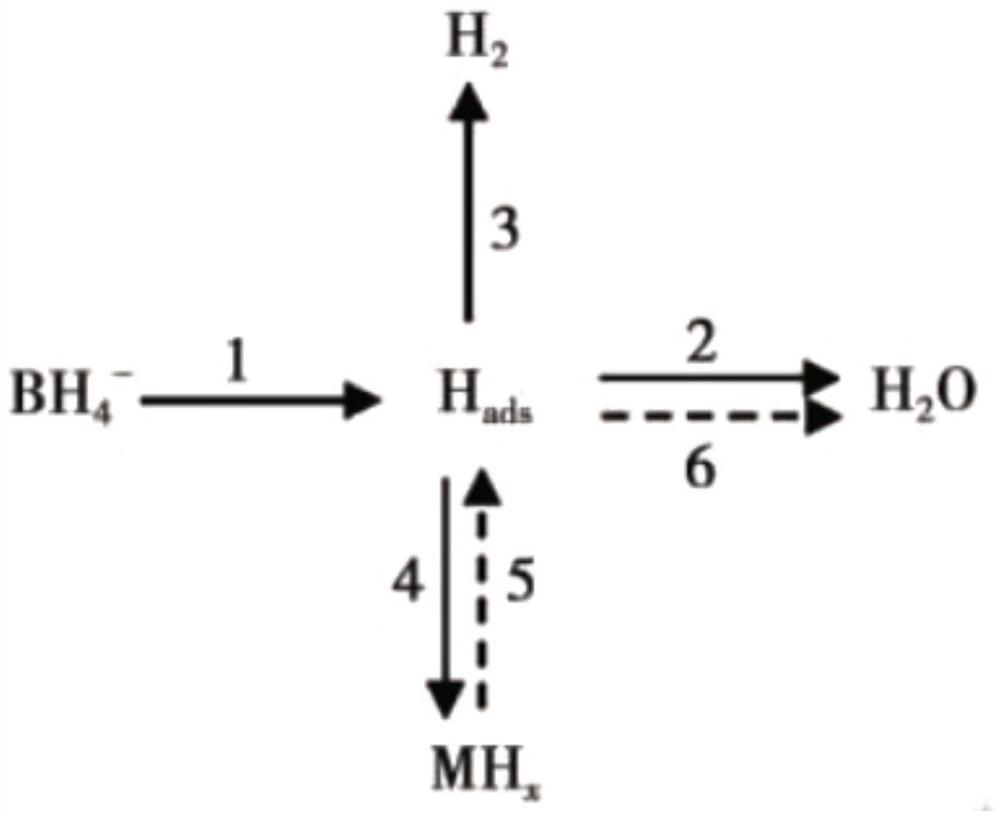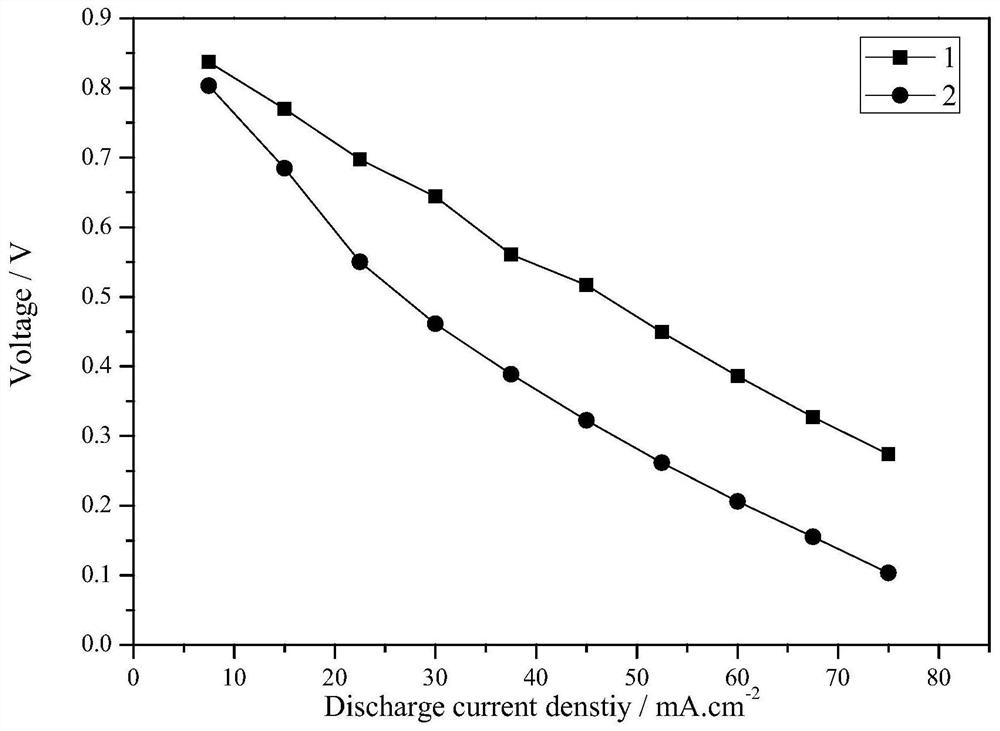Method for manufacturing anode of direct sodium borohydride fuel cell
A sodium borohydride, fuel cell technology, applied in fuel cells, battery electrodes, circuits, etc., can solve the problems of reducing the effective contact area between the catalyst and the sodium borohydride electrolyte, reducing the electrochemical catalytic performance of the electrode, etc., to achieve electrochemical catalysis The effect of excellent activity, favorable for popularization and use, and simple process
- Summary
- Abstract
- Description
- Claims
- Application Information
AI Technical Summary
Problems solved by technology
Method used
Image
Examples
Embodiment 1
[0060] La 15 Fe 4 Ni 72 mn 7 B 2 The hydrogen storage alloy is broken under the protection of the atmosphere, and the alloy powder with a particle size of ≤75 microns is sieved to obtain the alloy powder with a particle size of ≤75 microns; add the alloy powder with a particle size of ≤75 microns into the plasma spraying feed chamber;
[0061] Foam nickel (thickness 1.3mm, surface density 420g.m -2 ) is fixed on the spraying rotating mechanism;
[0062] Adjust the spraying voltage to 64.4V, the spraying current to 500A, the argon gas flow rate to 400L / h, the speed of the feeder to 0.2r / min, start spraying, and finish spraying after 50 times of spraying; wait until the nickel foam loaded with hydrogen storage alloy powder is cooled Finally, the nickel foam was removed from the spraying rotary mechanism to complete the spraying.
[0063] Table 1 Comparison of the amount of hydrogen storage alloy loaded by coating method and plasma spraying method
[0064] Electr...
Embodiment 2
[0070] La 15 Fe 4 Ni 72 mn 7 B 2 The hydrogen storage alloy is broken under the protection of the atmosphere, and the alloy powder with a particle size of ≤75 microns is sieved to obtain the alloy powder with a particle size of ≤75 microns; add the alloy powder with a particle size of ≤75 microns into the plasma spraying feed chamber;
[0071] Foam copper (thickness 1.5mm, surface density 400g.m -2 ) is fixed on the spraying rotating mechanism;
[0072] Adjust the spraying voltage to 64.4V, the spraying current to 500A, the flow rate of argon to 400L / h, the speed of the feeder to 0.2r / min, start spraying, and finish spraying after 50 times of spraying; wait until the copper foam loaded with hydrogen storage alloy powder is cooled Finally, the copper foam is removed from the spraying rotary mechanism to complete the spraying.
[0073] Table 2 Comparison of the amount of hydrogen storage alloy loaded by the coating method and the plasma spraying method
[0074] ...
PUM
| Property | Measurement | Unit |
|---|---|---|
| Granularity | aaaaa | aaaaa |
Abstract
Description
Claims
Application Information
 Login to View More
Login to View More - R&D
- Intellectual Property
- Life Sciences
- Materials
- Tech Scout
- Unparalleled Data Quality
- Higher Quality Content
- 60% Fewer Hallucinations
Browse by: Latest US Patents, China's latest patents, Technical Efficacy Thesaurus, Application Domain, Technology Topic, Popular Technical Reports.
© 2025 PatSnap. All rights reserved.Legal|Privacy policy|Modern Slavery Act Transparency Statement|Sitemap|About US| Contact US: help@patsnap.com



